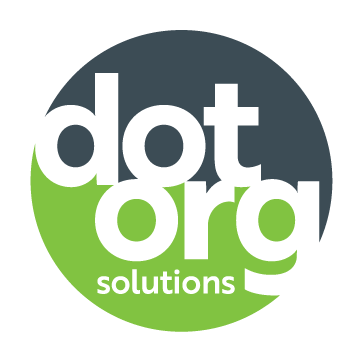4 best practices for optimizing your nonprofit website
As a nonprofit, having an effective website is a crucial part of attracting and engaging potential donors and supporters. More people are online searching for information than ever, which means there’s A LOT of potential to see more users on your website or to be discovered by new supporters. However, creating a website that both lures in your audience and helps you accomplish your goals isn’t easy, especially with a limited budget and smaller staff sizes. But, don’t let that deter you - this blog post is here to lay out four handy website tips for nonprofits that can help you optimize your online presence and increase engagement.
1. Conduct keyword research
Keyword research involves identifying the words and phrases that your target audience is using to search for information related to your nonprofit. For example, if you are a nonprofit animal shelter, you may find the most popular keywords leading people to your site are “pet adoption” and “animal shelter volunteers”. By incorporating these keywords into several places on your website, Google will recognize that those are two terms you want to make sure your site shows up for. This will in turn increase your visibility on search engine results pages (SERPs) and attract more traffic to your site.
To conduct keyword research, you’ll need to enlist the help of an online tool like Google Search Console. This free tool helps you see what people are searching on Google that led visitors to your website. Google Analytics is another great resource that will help you hone in on the content users are most interested in. It allows you to analyze the top visited pages on your site which are likely to feature content your audience is searching for.
Once you have a list of relevant keywords (pet adoption, animal shelter volunteers, etc.), you can strategically build them into your website. Great places to add your keywords are page headlines, subheadings, body text, image alt tags and meta descriptions.
Having strong keywords will help your website rank high organically and allow users to find you easier. In other words, the stronger keywords you have, the better Google will like your site and the more people can find you, which means more donations, volunteers and awareness for your nonprofit!
2. Optimize for user experience on your site
User experience (UX) refers to the overall experience that a user has while interacting with your website. A positive user experience can lead to increased engagement, while a negative user experience can lead to high bounce rates and decreased conversions. There’s probably been times where you’ve been on a website and hopped off quickly due to stale designs and awkward navigation. Or the opposite – a site pulled you in and kept you hooked. You obviously want to aim for the latter. A good website will draw a user in and keep them clicking.
To optimize your nonprofit website for UX, consider looking at your site in the eyes of someone who isn’t familiar with your organization, or better yet, ask a friend or family member to click around your site and answer:
- Are your mission and values easy to identify?
- Is it easy to navigate through the site?
- Are pages outlined and simple to visit?
- Do pages direct users to other pages or take a specific action?
When in doubt, keep it simple; don’t overcomplicate your site with language that may confuse users. Lean on visual elements like images, videos and infographics to make your site more visually appealing and engaging. Remember – you want them to be pulled in, not pushed out by blocks of text or a confusing user experience.
3. Make sure your site is mobile friendly
Have you ever gone to visit a site on your phone, only to find awkward page settings that are nearly impossible to navigate? It’s a frustrating experience many of us have faced at least once, and it’s something you’ll want to avoid for your nonprofit’s website.
Expanding on the importance of UX, it’s key that your site is easily accessible across all devices, whether it’s a desktop or an iPhone. This will help you reach a wider audience, letting people access you whenever and wherever they are. To test your site’s mobile optimization, try out Google’s Mobile Friendly test!
Other things you’ll want to keep in mind when optimizing for mobile:
- Make sure your website menu is clear and easy to navigate. For example, you can use a drop-down navigation instead of a header format used on desktop sites.
- When selecting a website theme, make sure it is responsive. Responsive web design means the website is built with mobile- friendly features so the user has a different web experience whether they are on a desktop, tablet, or phone. The website will automatically adjust your layout to any screen size, making for a much simpler user experience.
- Feature visible and easy-to-tap buttons on your pages. When you want users to take action, the buttons should be clear and easy to click.
4. Create strong CTAs (Calls-to-action)
It’s not enough just to attract visitors to your site – you need them to take action. CTAs, or calls-to-action, are prompts that encourage users to do something specific, such as making a donation or signing up for your newsletter. With strong CTAs, your website visitors can transform into donors or supporters, all of which are crucial for nonprofits.
To create effective CTAs, consider the following tips:
- Use action-oriented language: Use verbs like "donate", "support” or "join" to make it clear what action you want users to take.
- Make CTAs visually prominent: You don’t want them to blend into the background – you want them to pop. Use contrasting colors, bold text or buttons to make CTAs stand out on the page.
- Be strategic about where your CTAs are located: You want your CTAs to be in prominent locations on the page, such as above the fold and at the end of blog posts where users can easily see them.
- Test and make changes to your CTAs: See what CTAs your site visitors are most drawn to and change things around based on your results.
Having an optimized website for your nonprofit is key in this digital day and age. By following these tips, you’ll have a curated, dynamic website at your disposal, which is no small thing. Your nonprofit, with its new optimized site, will be able to efficiently attract and engage potential donors and supporters. You’re also building upon your online presence, increasing engagement with your nonprofit and working to achieve all of your goals. With an optimized website, the sky’s the limit for your nonprofit.
Additional links:
- https://blog.dotorgsolutions.com/blog/digital-metrics-nonprofits-should-know
- https://blog.dotorgsolutions.com/blog/three-ways-digital-marketing-can-help-nonprofits-connect-with-constituents
- https://blog.dotorgsolutions.com/blog/six-digital-marketing-investments-nonprofits-can-make-to-improve-reach
- https://blog.dotorgsolutions.com/blog/eight-inbound-marketing-tips-for-nonprofits
Like what you read? Subscribe to our weekly blog and it will be delivered directly to your inbox!

Dot Org Content Team
Dot Org Solutions works with nonprofits of all types to raise more money, communicate effectively and educate their constituents so they can build better communities. Our proven systems and years of experience help reduce the anxiety and stress felt by nonprofit teams, giving them more time to focus on other important things.

